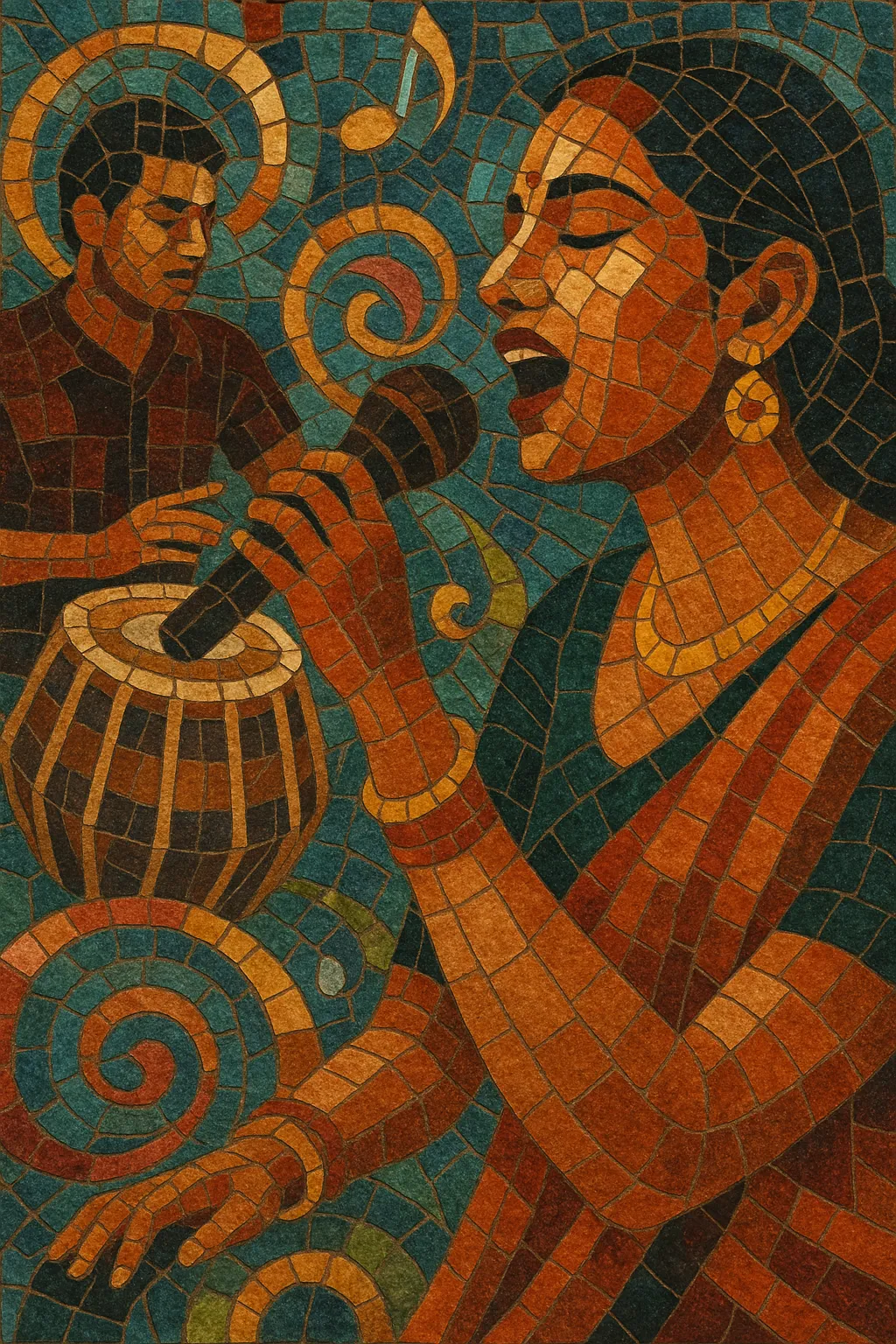Tamil pop is contemporary popular music performed in the Tamil language, drawing on both global pop trends and South Indian musical traditions. It sits at the crossroads of glossy, hook-driven production and melodic ideas shaped by Carnatic ragas and Tamil folk rhythms.
While Tamil film music (Kollywood) remains a dominant cultural force, Tamil pop also exists as an independent scene of singles and videos released outside films. The sound ranges from dance‑pop and electropop to R&B‑tinged ballads and hip hop crossovers, often featuring “Tanglish” (Tamil–English) lyrics, memorable choruses, and high-impact, audiovisual presentation suited to streaming and short‑form platforms.
Tamil pop coalesced during the 1990s parallel to India’s Indipop wave and the cassette/TV music-video boom. Tamil film music (Kollywood) had long produced pop‑leaning songs, but the 1990s saw independent Tamil‑language singles and non‑film albums begin to surface, borrowing production ideas from synth‑pop, dance‑pop, and R&B while preserving Tamil melodic sensibilities.
The spread of satellite TV channels, FM radio, and eventually YouTube accelerated the form. Star composers and singers blurred lines between film hits and standalone pop releases. Producers embraced modern DAWs, autotune, and EDM aesthetics, while retaining ragabased vocal phrasing and folk percussion flavors (kuthu/gaana). Viral hits—often in “Tanglish”—demonstrated the genre’s internet-native appeal, helping Tamil pop travel beyond the Tamil diaspora.
Through the 2010s, Tamil pop absorbed hip hop, trap, EDM, and K‑pop visual cues, yet kept a Tamil core via lyrical themes, gamaka-inflected melodies, and occasional use of indigenous timbres (nadaswaram, thavil, urumi). Diaspora scenes in Singapore and Malaysia added fresh voices and collaborative opportunities, strengthening a pan‑Tamil pop identity.
An active indie ecosystem—labels, distributors, and creator platforms—supports non‑film Tamil pop. Artists release singles optimized for playlists and reels, experiment with hybrid forms (pop‑hip hop, pop‑folk, pop‑R&B), and collaborate across South Indian languages. The genre remains highly visual and hook-driven while continuing to pull from Carnatic and folk roots.


